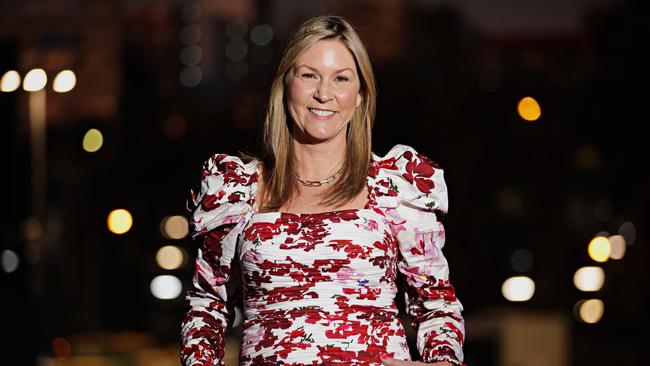Insurers claim digital-only channels help build closer connections with customers
Australians are using digital-only channels to interact with their insurers more than ever before. How is the industry seizing the opportunity?

Australian consumers increasingly prefer interacting with their insurers via digital-only platforms according to new Bain & Company research.
The annual report, which tracks loyalty and consumer behaviour in the insurance sector found that over the past year, more than 50 per cent of customer interactions for general insurers were conducted through digital-only channels in 2022, up 15 per cent from 35 per cent in 2021.
At a time when natural hazard events are becoming more frequent, insurers are leaning on digital channels to cultivate closer connections with customers and build trust across multiple digital touchpoints.
The report revealed that Australia and the United Kingdom are leading the charge for digital-only interactions, with 51 per cent and 50 per cent respectively, compared to the US at 40 per cent, Germany at 30 per cent and Singapore at 35 per cent.
“Insurance providers need to be more customer focused than they have ever been before. consumer needs are changing and are becoming more digital,” Adam Swirski, associate partner at Bain & Company told The Growth Agenda.
“And a large proportion of the population is also being impacted by economic circumstances. Insurers need to adapt to changing their offers to match circumstances that Australian consumers are facing.”
The report also found that insurers that operate (and communicate) with purpose and transparency can cultivate greater customer loyalty, including whether they engage in ethical, transparent and responsible business practices.
“In general, the way that customers look at insurance, they look at two things; the functional lens and the emotional. The functional lens is just the coverage on getting the price I‘m going to pay for it. The emotional lens is ‘Do I trust them? How do their values resonate with me? What’s the purpose of this brand?’” said Mr Swirski.
Australians, in particular, are also thinking about risk prevention according to the report, including how they can better protect their health, home and vehicles before incidents occur.
Insurers are getting better at using digital channels to learn about their customers’ behaviour, incentivising them with rewards. The new report found that nearly 90 per cent of consumers were interested in services such as inspection services prior to buying a car or home, or rewards for healthy living.
Mim Haysom, chief marketing officer and executive general manager of brand and marketing at Suncorp Group, said its use of digital platforms have paved the way for communicating brand purpose, while building trust and stronger connections between the brand and its audience.

“Leveraging technology and digital platforms has enabled us to not only enhance the customer experience through faster, smarter interactions at a transactional level, but also created opportunities for richer connections with our brand and what we stand for,” said Ms Haysom.
Through one campaign titled ‘Resilience Road’, Suncorp advocated for greater natural disaster resilience, which included a digital hub that featured stories of homeowners who have lived through natural disasters, and how the insurer helped them make their homes more resilient.
“In turn, the hub educated our customers on how they can reduce their own risk by providing them with checklists and guides, the result being significantly improved outcomes for both customers and the organisation. We’ve also introduced interactive digital tools to increase transparency around home and contents coverage by helping explain the product visually and in plain English,” said Ms Haysom.
While appealing to customers on an emotional level is not a new strategy – it is becoming ever more important, combined with the critical functional elements of insurance offerings that attract and retain customers, such as price. This places an ever greater imperative on creative artefacts and brand platforms to connect with audiences.
From a storytelling standpoint, Mr Swirski said there is a distinct shift towards tailoring messaging to connect with different audiences in the insurance category. “We‘re going from a very ‘one size fits all’ approach to a much more targeted, personalised approach,” he said. “And you’re starting to see that play out in the market with brands and particularly to certain sub segments of the customer base.”
As many recent campaigns suggest, this personalisation still begins with a strong brand platform upon which to build. While Budget Direct, for example, leans into its award-winning products, NRMA has become well known for its emotive “help” message.
In January, creative agency 303 Mullenlowe released a second campaign for Budget Direct as part of its ‘Insurance Solved’ platform, reminding consumers about the brand’s accolades through entertaining, informative creative.
The latest ad, released in January, featured three characters ‘Sarge’, ‘Jacs’ and ‘Chief’, who, while competing with the noise and destruction of a leaf blower-induced tornado, explain the benefits of Budget Direct’s products.
303 Mullenlow’s chief creative officer, Bart Pawlak said the campaign has already resonated with Australian audiences.
“In the case of Budget Direct, this has equated to a distinct approach of storytelling and humour that takes observations of ordinary Australian life and adds the right amount of entertaining hyperbole,” said Mr Pawlak.
“New generations of consumers are continually entering the market and will have a range of different preferences for how they hear and learn about insurance,” said Mr Pawlak. “But we find certain needs remain – and having a strong rational claim delivered in a way that provides an entertaining moment of escape from the realities of everyday life remains as effective as ever, as do the channels that are best suited to that style of consumer engagement.”
This consistency of message, character-driven ads and distinct tone of voice has been successful for Budget Direct and has built both campaign and brand loyalty.
“While new platforms and customer touchpoints are emerging all the time, when it comes to brand building there are certain fundamentals that remain the same,” said Mr Pawlak.
“Having a strong, evocative creative platform and then bringing it to life in a way that resonates with target audiences, and that can be applied across multiple channels, is still one of the most effective ways to capture the attention of a wide group of consumers.”



